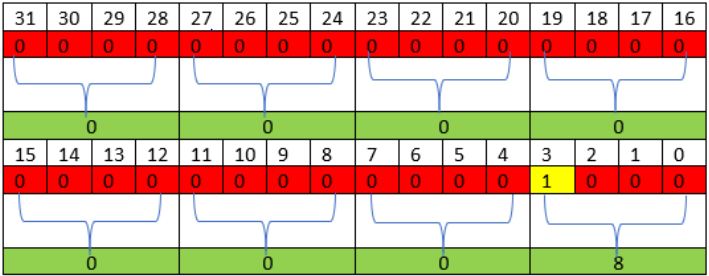TO TURN ON THE LED USING LPC2148

SIMULATOR: PROTEUS 8.0 SOFTWARE: KEIL CIRCUIT DIAGRAM: WORKING: This project is about turning on the led connected to P0.0 pin of lpc 2148.In this project,LED is connected in current sinking arrangement. Whenever logic 0 is provided to P0.0 pin of lpc 2148, LED get turned ON.As in this project current sinking arrangement is used hence logic 0 is provided to turn on the led. PROGRAM: #include<LPC214x.h> // Header file of LPC2148 int main() IODIR0=0x00000001;// select p0.1 as an output pin PINSEL0=0x00000000; // select gpio function of p0.1 while(1) // continuous loop { IOCLR0 = 0x00000001;//turn on the led } } PROGRAM DESCRIPTION: Here,using IODIR register p0.0 pin is set as an output pin.PINSEL0 register is used to select the GPIO(General purpose input/output pin) function of the pin. Using IOCLR register logic 0 is provided to port 0.0 pin. While loop is used for the continuous process. VIDEO: Note: Please ...




